Related Research Articles

Heinrich Rudolf Hertz was a German physicist who first conclusively proved the existence of the electromagnetic waves predicted by James Clerk Maxwell's equations of electromagnetism. The unit of frequency, cycle per second, was named the "hertz" in his honor.

Arnold Johannes Wilhelm Sommerfeld, was a German theoretical physicist who pioneered developments in atomic and quantum physics, and also educated and mentored many students for the new era of theoretical physics. He served as doctoral supervisor and postdoc supervisor to seven Nobel Prize winners and supervised at least 30 other famous physicists and chemists. Only J. J. Thomson's record of mentorship offers a comparable list of high-achieving students.

Gustav Ludwig Hertz was a German experimental physicist and Nobel Prize winner for his work on inelastic electron collisions in gases, and a nephew of Heinrich Hertz.

Gustav Adolf Feodor Wilhelm Ludwig Mie was a German physicist. His work included Mie scattering, Mie potential, the Mie–Grüneisen equation of state and an early effort at classical unified field theories.
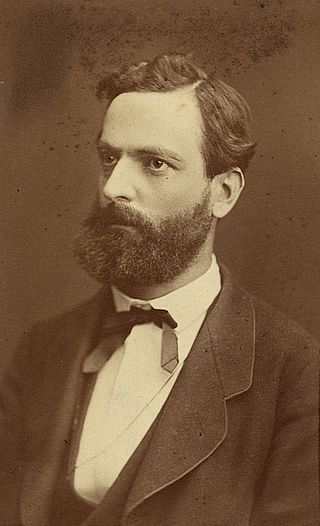
Heinrich Martin Weber was a German mathematician. Weber's main work was in algebra, number theory, and analysis. He is best known for his text Lehrbuch der Algebra published in 1895 and much of it is his original research in algebra and number theory. His work Theorie der algebraischen Functionen einer Veränderlichen established an algebraic foundation for Riemann surfaces, allowing a purely algebraic formulation of the Riemann–Roch theorem. Weber's research papers were numerous, most of them appearing in Crelle's Journal or Mathematische Annalen. He was the editor of Riemann's collected works.
Wilhelm Walcher was a German experimental physicist. During World War II, he worked on the German nuclear energy project, also known as the Uranium Club; he worked on mass spectrometers for isotope separation. After the war, he was director of the Institute of Physics at the University of Marburg. He was a president of the German Physical Society and a vice president of the German Research Foundation. He helped found the Society for Heavy Ion Research and the German Electron Synchrotron DESY. He was also one of the 18 signatories of the Göttingen Manifest.

Heinrich Rubens was a German physicist. He is known for his measurements of the energy of black-body radiation which led Max Planck to the discovery of his radiation law. This was the genesis of quantum theory.
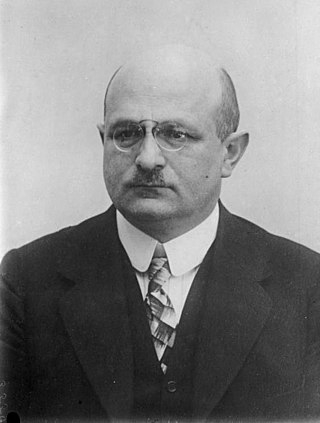
Carl Wilhelm Ramsauer was a German professor of physics and research physicist, famous for the discovery of the Ramsauer–Townsend effect. He pioneered the field of electron and proton collisions with gas molecules.
Fritz Eduard Josef Maria Sauter was an Austrian-German physicist who worked mostly in quantum electrodynamics and solid-state physics.
Richard Becker was a German theoretical physicist who made contributions in thermodynamics, statistical mechanics, superconductivity, and quantum electrodynamics.
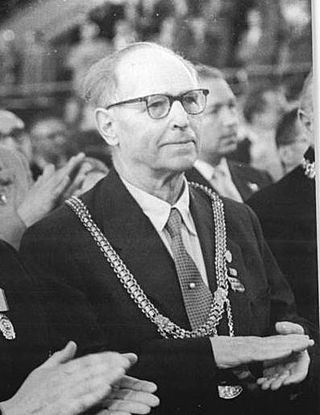
Max Volmer was a German physical chemist, who made important contributions in electrochemistry, in particular on electrode kinetics. He co-developed the Butler–Volmer equation. Volmer held the chair and directorship of the Physical Chemistry and Electrochemistry Institute of the Technische Hochschule Berlin, in Berlin-Charlottenburg. After World War II, he went to the Soviet Union, where he headed a design bureau for the production of heavy water. Upon his return to East Germany ten years later, he became a professor at the Humboldt University of Berlin and was president of the East German Academy of Sciences.
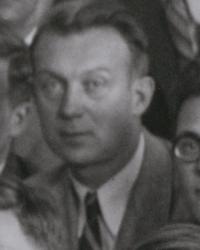
Hans Kopfermann was a German atomic and nuclear physicist. He devoted his entire career to spectroscopic investigations, and he did pioneering work in measuring nuclear spin. During World War II, he worked on the German nuclear energy project, also known as the Uranium Club.
Johannes Wilhelm Heinrich Juilfs, also known by the alias Mathias Jules, was a German theoretical and experimental physicist. He was a member of the Sturmabteilung (SA) and then, in 1933, of the Schutzstaffel (SS). Prior to World War II, he was one of three SS staff physicists who investigated the physicist Werner Heisenberg during the Heisenberg Affair, instigated, in part, by the ideological Deutsche Physik movement. During the war, he worked as a theoretical physics assistant at the Kaiser Wilhelm Institute for Physics. During the denazification process after World War II, he was banned from working as a civil servant in academia. For a few years, he worked as a school principal, and then he took a job as a physicist in the textile industry. With the help of Heisenberg and the Minister of Lower Saxony, he was able to become a full professor at the Leibniz University Hannover.
Rudolf Karl Anton Tomaschek was a German experimental physicist. His scientific efforts included work on phosphorescence, fluorescence, and (tidal) gravitation. Tomaschek was a supporter of deutsche Physik, which resulted in his suspension from his university posts after World War II. From 1948 to 1954, he worked in England for the Anglo-Iranian Oil Company (AIOC). In 1954, when AIOC became BP, he went to Germany and was president of the Permanent Tidal Commission.
Walter Friedrich Karl Weizel was a German theoretical physicist and politician. As a result of his opposition to National Socialism in Germany, he was forced into early retirement for a short duration in 1933. He was a full at the University of Bonn, from 1936 to 1969. After World War II, he helped to establish the Jülich Research Center, and he was a state representative of the Social Democratic Party of Germany.

Wilhelm Heinrich Westphal was a German physicist. From 1918, he was a professor at the University of Berlin. During the period 1922 to 1924, he was also an expert adviser to the Prussian Ministry of Science, Arts and Culture. From 1928, he was simultaneously a professor at the University of Berlin and the Technical University of Berlin. His position at the former ended when it fell in the Russian sector at the close of World War II, but he achieved emeritus status at the latter in 1955.
Herbert Arthur Stuart was a German experimental physicist who made contributions in molecular physics research. During World War II, he was director of the experimental physics department at the Technische Hochschule Dresden. From 1955, he was the head of the high polymer physics laboratory at the University of Mainz.
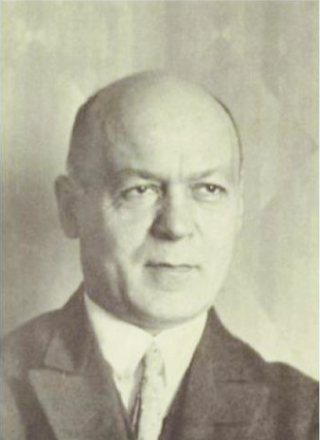
Leon Lichtenstein was a Polish-German mathematician, who made contributions to the areas of differential equations, conformal mapping, and potential theory. He was also interested in theoretical physics, publishing research in hydrodynamics and astronomy.
Gerhard Karl Theodor Haenzel was a German mathematician.
Erich Hans Rothe was a German-born American mathematician, who did research in mathematical analysis, differential equations, integral equations, and mathematical physics. He is known for the Rothe method used for solving evolution equations.
References
- 1 2 3 Hort, Wilhelm Deutsche Biographie
- ↑ Hitz - Kozub edited by Rudolf Vierhaus
- ↑ HathiTrust Digital Trust published works